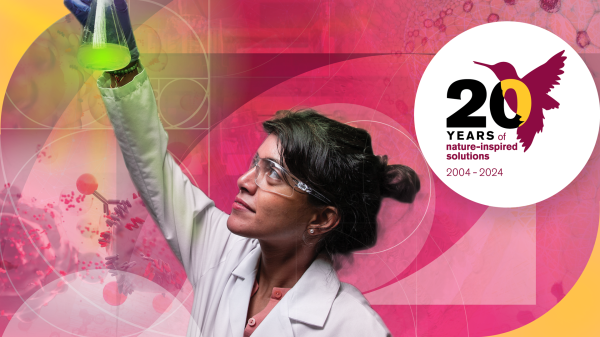Tiny pumping stations play outsize role in cellular health and disease

Abhishek Singharoy is a researcher in the Biodesign Center for Applied Structural Discovery and ASU’s School of Molecular Sciences.
In order to carry out their astonishingly varied tasks, living cells make use of a range of micromachines. One of the most crucial of these — known vacuolar ATPase or V-ATPase — is responsible for ferrying protons into cellular compartments or organelles. Without it, cells could not survive.
Once set in motion, this natural motor — ensconced in the cell organelle’s fatty outer membrane — spins like a helicopter blade at 100 times per second, sweeping in protons from outside the cell’s organelle.
Scientists have long known of the indispensable role of V-ATPase. But understanding the workings of this intricate minifactory have been challenging to tease out, until now.
In new research appearing in the journal Science Advances, Abhishek Singharoy and his colleagues combine high-resolution cryo-EM images made at the Department of Energy’s SLAC National Accelerator Laboratory with supercomputer simulations, in order to peer into the intricacies of this proton pump for the first time.
Singharoy is a researcher in Arizona State University's Biodesign Center for Applied Structural Discovery and ASU’s School of Molecular Sciences. His work helped fellow researchers visualize the complexities of V-ATPase through supercomputer simulations conducted at the Oak Ridge National Laboratory.
“Molecular motors exemplify some of the most intricate chemo-mechanical devices, and our team in SMS and CASD has developed highly sophisticated computational tools to address the energy source and sinks of the motor’s ratcheting motion," he said. "In 2017, we started working on the soluble part of the V-type motor, namely V1 ATPase. Now that we have a good control on the transmembrane Vo motor, it’s a great step forward towards simulating the entire motor in collaboration with Soung-Hun Roh, Stephan Wilkens and Wah Chiu.”
The current findings will have implications for intelligent drug design as well as furthering our understanding of how cells combat viruses and other pathogens.
More Science and technology

ASU-led Southwest Advanced Prototyping Hub awarded $21.3M for 2nd year of funding for microelectronics projects
The Southwest Advanced Prototyping (SWAP) Hub, led by Arizona State University, has been awarded $21.3 million in Year 2 funding…

Celebrating '20 Years of Discovery' at the Biodesign Institute
Editor’s note: The Biodesign Institute at Arizona State University wraps up its 20th anniversary with the sixth and final…

Student research supports semiconductor sustainability
As microelectronics have become an increasingly essential part of modern society, greenhouse gas emissions, which are associated…